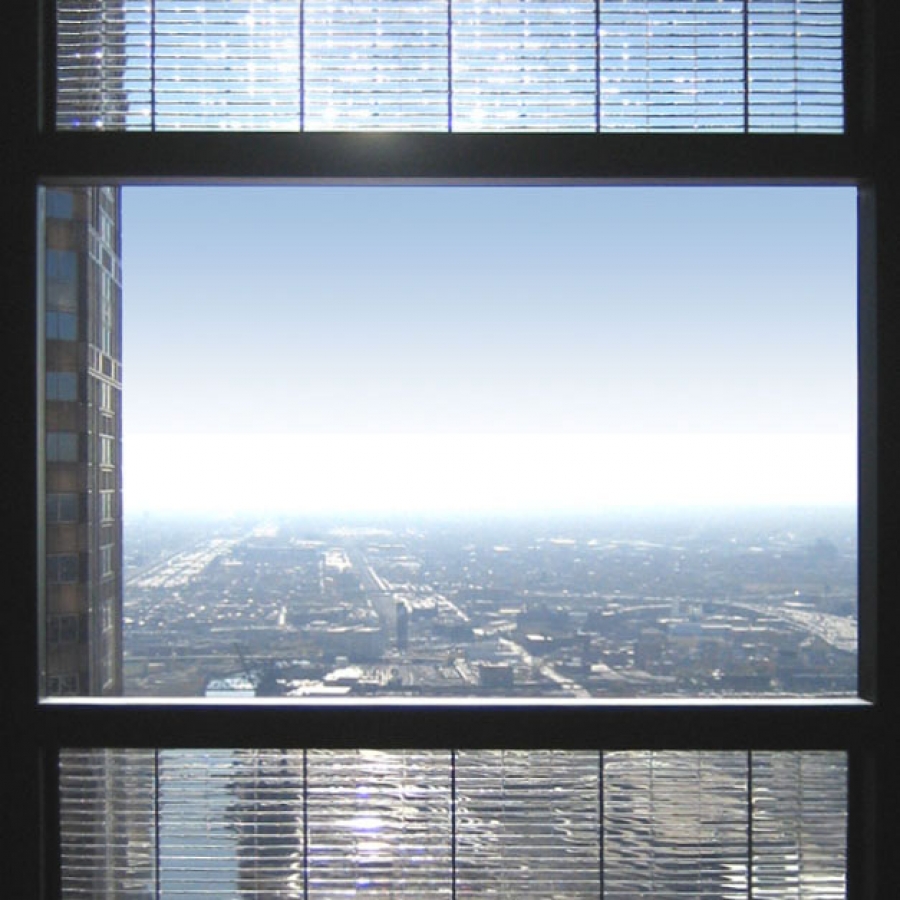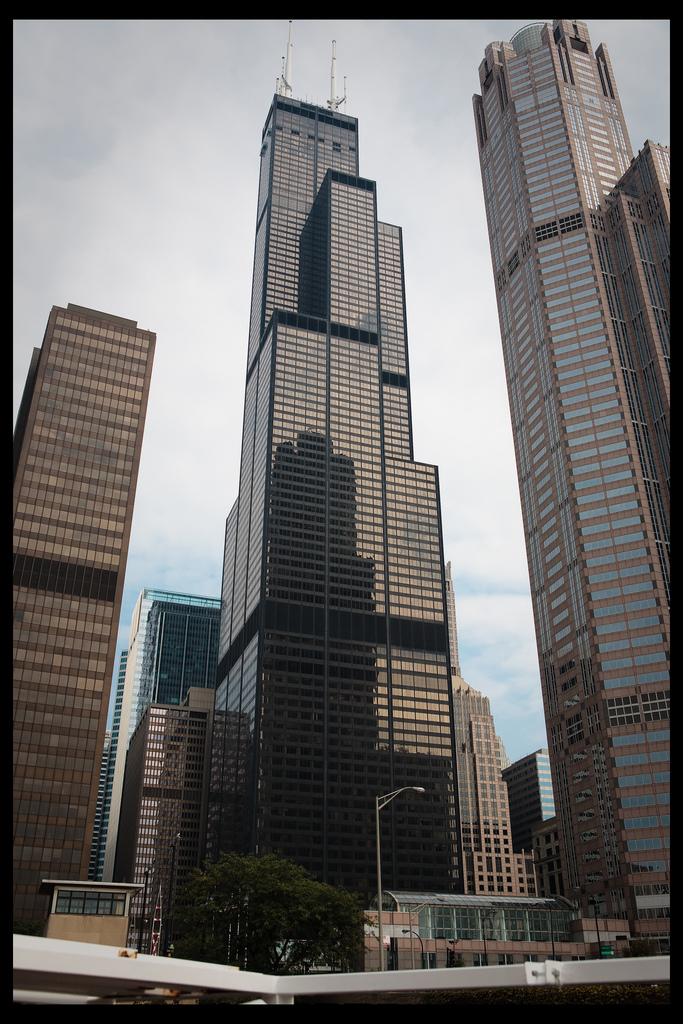Solar Windows on the Willis Tower
Video
Pythagoras Solar undertakes a pilot project to install solar windows on the Willis Tower (formerly the Sears Tower) in Chicago. The project should provide data on the potential use of glass facades to collect solar energy.
Pythagoras Solar is conducting an experiment on one of the most iconic structures in the world – the Sears Tower, now Willis Tower. Established in 2007, Pythagoras specializes in solar panels for windows, focusing particularly on skyscrapers and other tall buildings. Skyscrapers have little rooftop area to accommodate solar collectors but use an extensive amount of glass use in their facades. These expanses of glass result in astronomical heating and cooling costs. Skyscrapers also contribute to a localized retention of heat known as urban heat island (UHI) effect, and large cities such as Chicago are looking for ways to mitigate that heat retention.
 Image courtesy of Resolution Communications
Image courtesy of Resolution Communications
A two square foot section of windows were replaced on the south side of the 56th floor of the Willis Tower in November 2010. In their place are high-tech solar windows, double-paned with photovoltaic cells sandwiched between the panes. The photovoltaic cells are monocrystalline, which offers the highest efficiency rating – 17% efficiency versus 10% for polycrystalline. Each glass unit contains an internal plastic reflective prism that redirects sunlight onto the solar cell while still admitting natural light into the building. The solar cells work individually rather than as a series, something not usually found in photovoltaic cells. The windows were designed like louvered windows in that they don’t interrupt views and natural light but reduce glare and overheating.

Shading is a concern, especially on the lower levels of the Willis Tower. American Landmark Properties, the owners of the Willis Tower, conducted a study that showed that very few parts would not catch at least some sun. Despite the solar panels' location on the south face of an immobile structure, they will still work at 14.1% efficiency. Capable of generating 120 watts of power, Pythagoras Solar's windows should produce the same amount of energy as rooftop-mounted solar panels. If they can work on the south face, perhaps they can work anywhere. Such a success could indicate that building integrated photovoltaic (BIPV) systems are practical, saving energy and cooling costs and reducing urban heat island (UHI) effect. John Huston, Executive Vice President of American Landmark Properties, relays that if the Pythagoras Solar experiment is successful then the entire south face will be tested, then the rest of the faces. Overall, the cells could possibly generate two megawatts of power.
Completed on May 3, 1973, the Sears Tower stood as the world’s tallest building at 1,450' (110 stories) for 25 years before the Petronas Twin Towers in Malaysia were built. The building was constructed of steel columns and beams by using a “mega-module” system. Originally the building was designed for the Sears, Roebuck and Company by the architectural firm Skidmore, Owings & Merrill (now SOM). In 2009, the Willis Group Holdings of London insurance agency made an agreement to lease 140,000 sq. ft. as long as they were given naming rights. On July 16, 2009 the Sears Tower was officially renamed the Willis Tower. Today, the Willis Tower remains the tallest building in the western hemisphere and is one of the top 10 tallest buildings in the world. It still has the highest skydeck in the world, located on the 103rd floor, at an elevation of 1,353', not to mention that it has a world-class broadcast platform on the rooftop – the antennas alone add nearly 300' in height and broadcast to the entire Chicago area.

Carla D'Errico
An alumni of The Ohio State University, Ms. D'Errico obtained a degree in travel writing through a study program that she created herself. For two years Ms. D'Errico served as a staff writer for The Animal Insider, a quarterly publication based in Columbus, Ohio, and has also worked as a review scout for the Columbus division of Yelp.com. Now she is trying her hand at covering ecologically responsible and sustainable architecture for Buildipedia.com.



